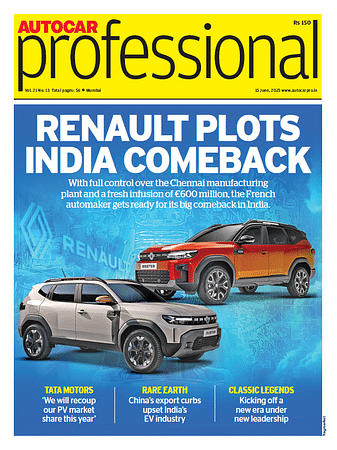We Need to Move Beyond 'Make in India' to 'Design in India': XLRI's Avik Chattopadhyay
In its first year, XLRI's Centre for Automobile Design & Management (XADM) will admit 25 students and will feature faculty from Japan, Europe, and India. In their two-year program, students will collaboratively build a working prototype.
The soon-to-be-launched XLRI's Centre for Automobile Design & Management (XADM), Jhajjar, is aiming to be more than just a school. With operations set to begin in 2026, the Centre will focus on developing a uniquely Indian design philosophy for the automotive sector, says Avik Chattopadhyay, Chairperson of the Centre.
Chattopadhyay emphasizes the need for India to move beyond merely "Make in India." “Make in India won't work unless you combine it with Design in India,” he said. “Till the time you don't take design as an investment, you'll always look at it as an expense. We take production engineering as an investment, we take a new assembly line as an investment. Why don't we take design the same way?”
According to him, building an Indian design identity is a long-term journey, possibly stretching over a few decades. “Maybe three decades from now, we can end up establishing something called the Indian Design DNA, a very particular way of designing things or a very specific way of looking at mobility, which is very Indian,” Chattopadhyay explained.
Chattopadhyay likens the goal to how Italian automobiles are instantly recognizable regardless of branding. “Even if you take out the Ferrari or Lamborghini logos and ask people which part of the world this comes from, there's a high chance they’ll say Italy. There's something in their design language that’s very typically Italian. In Italian design, there's a certain edginess, and you need to understand the Romans culturally to grasp why Italians design their vehicles in a certain way, whether it's a tractor, car, or motorcycle. That's why a Cagiva doesn’t look like a BMW.”
Chattopadhyay believes Indian culture already offers enough aesthetic depth to inspire a unique automotive language. “We have it in our architecture, our cuisine, our music, our art, our clothes, so why can't we have it in our automobiles?” he asked. “I'm not saying it needs to look overtly Indian, but very subliminally, the Indian design DNA should creep in, possibly in the way you create your interiors, in the kind of fabrics you use.”
At the core of this vision is XLRI’s upcoming school, which will not follow the conventional classroom format. “What we are building is not a classroom; we are building a working studio,” said Chattopadhyay. “Right from drawing on paper, to CAD, to 3D modelling, to scale clay modelling, to 1:1 clay modelling, to prototyping — everything will be taught there.”
The curriculum will integrate design and management and be taught by global practitioners. “First is design plus management. Secondly, it’s taught by practitioners. And third, it's in a real-world working environment,” he said. “There are no classrooms in the school, just one large hall where the 25 students will sit. Otherwise, they will be in the clay modelling area, the CAD-CAM area, the prototyping workshop, or the additive manufacturing lab.”
In its first year, the Centre will admit 25 students and will feature faculty from Japan, Germany, and India. Students will complete their two-year program by collaboratively building a working prototype. “Your last term will be a project where the entire batch of 25 students builds a working prototype. Make it. Show it to the world,” he said.
Chattopadhyay also wants industry stakeholders to realize the commercial value of good design. “Design is not necessarily expensive. If the right investments are made, design is hugely profitable,” he stressed. “Look at the Tata Punch: People buy it largely because of its design, not just externally but also internally. And you're selling tons and tons of that vehicle. So you profit.”
He added that India needs more collaboration between automakers, studios, and research organizations to truly unlock its design potential. “Whether it’s an automaker, a studio, or a research organization — that collaboration is very much required to bolster our own capabilities in design,” he said.
Chattopadhyay’s vision is not just about creating skilled automotive designers but about cultivating a cultural and creative movement. “We’re not just teaching design. We’re building a mindset. And maybe one day, people will look at an unbranded vehicle and say, ‘Yes, this looks like it came from India.’ That’s the dream.”
RELATED ARTICLES
Michelin to Become Exclusive Tire Supplier for WorldSBK from 2027
The company will supply tires for all categories of the championship, applying innovations from MotoGP and MotoE.
Rane (Madras) Limited Approves Sale of 3.48-Acre Land Parcel in Chennai
Board approves disposal of surplus land at Velachery location to joint venture buyers.
Battery Smart Partners with Delhi Traffic Police for E-Rickshaw Driver Safety Program
India's largest battery-swapping network collaborates with traffic authorities to educate over 100 drivers on road safet...





 By Yukta Mudgal
By Yukta Mudgal
 17 Jun 2025
17 Jun 2025
 306 Views
306 Views





 Shruti Shiraguppi
Shruti Shiraguppi




